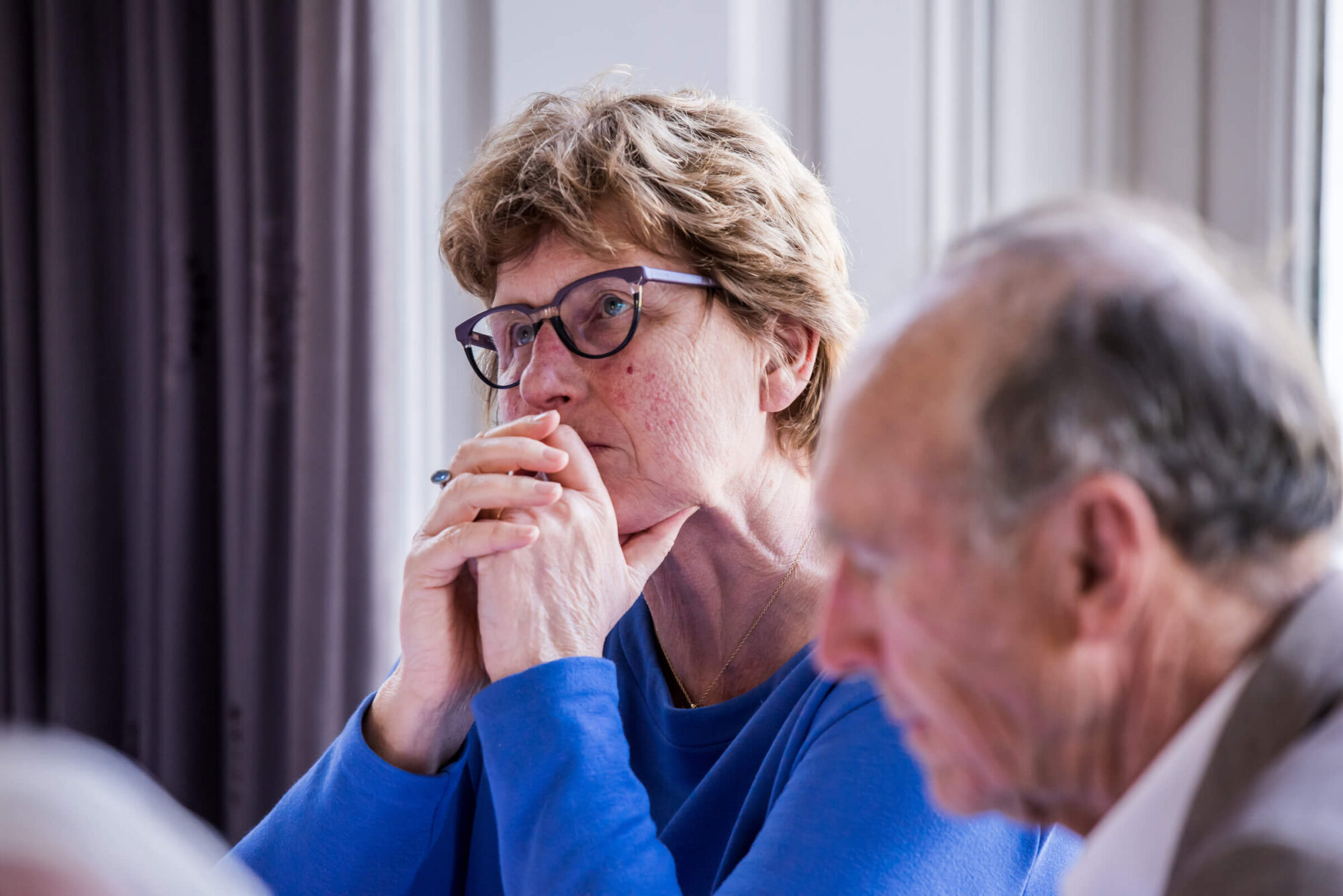NOM works to create a sustainable (and circular), healthy and smart economy in the Northern Netherlands. Current director Dina Boonstra: ''We are looking at major transitions, such as healthier food. We try to make an impact that way.''
A contributing factor is that the RIS3 regulation provides a lot of European money for transitions through innovation. Siem Jansen believes that in these kinds of projects you have to consider carefully why and how you do it. ''These are regional projects, but the growth is international,'' he points out. ,,Northern parties should not say that they are fully addressing it, but also doing it. That also applies to NOM.''
Arie van der Hek praises the presence of advanced industry in Brabant. There isn't any here. It is all service industry. What is currently being invested in the Eemshaven is admirable, but I do place a question mark over the ambition to attract another power-guzzling data center.''
Greening of chemistry
Dina Boonstra explains that the industry is clustered in Chemport Europe. Companies in Emmen, Delfzijl/Eemshaven and Heerenveen have united in this. ''There is something special going on there, the central theme is greening the chemistry,'' she says.
Siem Jansen is currently director of the National Program Groningen, which spends more than 1 billion euros on economic development. Circularity in industrial areas is important, he points out, but there is also a development based on knowledge, processing and production. New production sites are no longer linked to large international companies; they are often in-house developments.
I like that the cooperatives are working together to develop new products.
Arie van der Hek
Cooperatives are now even working together
''You see it now in protein, a number of large cooperatives have been brought together in the Fascinating project,'' Jansen says. Together with knowledge institutes and Avebe, the project focuses on agricultural processing. Jansen: ,,Avebe is not going to get rid of the potato, but that 2 percent protein is going to yield much more than those 98 percent carbohydrates.''
Apart from Avebe, the cooperatives involved are Cosun, Friesland Campina and Agrifirm. Ruud Bouwman marvels: ,,That cooperatives work together..., such a thing was unthinkable in my time. Absolutely unthinkable!'' Van der Hek adds: ,,I like the fact that the cooperatives are working together to develop new products.''
What is important in this development is that SMEs get involved. Dina Boonstra: ''The big companies are also increasingly looking for those innovative SMEs that look at long-term developments and invest in them.''
Protein factory saves 2 billion eggs
And she then reveals what one of the Fascinating people said to her. Who would love it if the cooperation resulted in a large plant protein factory. ''Because there are 3 billion eggs in the Netherlands - I haven't checked that number - and if that factory is there, we will only need 1 billion eggs.''
Philips Drachten has a pioneering role when it comes to the digitization of industry. But that was partly a coincidence, Siem Jansen believes. ''Thanks to the fact that there was a Philips director in Drachten who followed his own head and was also lucky enough to get along with the big boss at Philips, the Innovation Cluster Drachten came into being,'' Jansen says. Big clubs free up time and money to start something up. Jansen: ,,We have had too few of these kinds of big triggers.''

Half century of failures and successes
What would the northern Netherlands have looked like without NOM? Fewer companies from outside, fewer collaborations? Arie van der Hek thinks there have been successes and failures: ,,Frisian Shipyards in Harlingen would not have come about without the NOM. And Brons in Appingedam would otherwise have gone down ingloriously much earlier.''
Frits Migchelbrink wonders, ''If NOM hadn't been there, wouldn't there have been a different kind of platform? A platform where provinces meet?'' Siem Jansen adds: ''You can dissolve NOM, but then you have to put all the functions it performs somewhere.''
Every year 200 to 300 companies through the hands of NOM.
Siem Jansen
Siem Jansen does simple arithmetic: NOM exists for 50 years and every year 200 to 300 companies pass through NOM's hands. Count your profits. Companies like Google have also come, although there are different opinions on that now, Jansen notes. NOM has contributed to the arrival of numerous companies. Moreover, if there are major global developments,
then in no time there will be an expert within NOM who will ensure that new plans can be implemented. Dina Boonstra notes that NOM is the only development company in the Netherlands that represents three provinces. ''That does force officials and organizations to work together, to think about things that happen outside their own borders.''
NOM sometimes seems editors of independent journalists
There are also spin-offs like New Energy Coalition and NPAL (Northern Productivity Alliance). Arie van der Hek: ''In my time, networking was not developed. Whereas you desperately need the expertise of universities.'' He gets support from Dina Boonstra: ,,We now have the University of the North.

That takes place not only on Broereplein, but also in Balk at Pacques, at Groningen Seaports, at Wetsus, at Chemport Europe. It is distributed knowledge from the RUG.''
NOM sometimes seems like an editorial board of independent journalists, in Boonstra's experience. All people with their own knowledge, their own characters, it all has to fit within the set policy. Freedom and vision are at odds. Migchelbrink: "It was sometimes difficult to steer these people. I gave them space, but they also abused it. It took us 50 years to get here and I'm sure we can do even better.''
This article is part of a series of articles following a meeting between former NOM directors and current director Dina Boonstra. They look back on 50 years of NOM and philosophize about the future.
